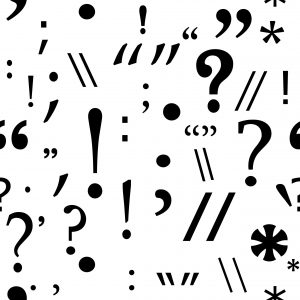While the colon is pretty straightforward, the semicolon can be a bit trickier because its use is often optional. Some writers love it, while others never use it at all. For hardcore grammar nerds (like me) there’s even a whole book about the use and abuse of the semicolon throughout the history of English literature and prose. (I am not an Amazon affiliate and do not receive anything for this endorsement.)
So let’s take it one step at a time. The easiest way to use a semicolon is to join two independent clauses without a joining word (conjunction) when the writer wants to make a close connection between them:
Raising twins wasn’t easy; I can’t imagine what it would be like to have triplets or more.
Identical twins share 100% of their DNA; fraternal twins share just 50%, the same as regular siblings.
In both these cases you can see why the writer would opt to link the independent clauses; they are clearly related. But you could instead join them with a comma and a conjunction (for, and, nor, but, or, yet, or so):
Raising twins wasn’t easy, so I can’t imagine what it would be like to have triplets or more.
Identical twins share 100% of their DNA, but fraternal twins share just 50%, the same as regular siblings.
Or you could make them two separate sentences:
Raising twins wasn’t easy. I can’t imagine what it would be like to have triplets or more.
Identical twins share 100% of their DNA. Fraternal twins share just 50%, the same as regular siblings.
So this is a stylistic choice. All these options are grammatically acceptable, but each has a different feel to it. To me, the last option—making them two sentences—seems choppy. But sometimes that might be the effect you want to create.
You can also include an introductory word or phrase after the semicolon and before the second sentence. Words and phrases commonly used in this situation include however, therefore, indeed, thus, hence, accordingly, besides, that is, for example, namely, etc. Be sure to include a comma after the introductory word or phrase and before the second sentence:
Some cultures consider the birth of twins to be good luck; however, others regard it as a bad omen.
Our sons have rather different personalities; nevertheless, they are very close.
The last main use of the semicolon is for a series of phrases which contain internal punctuation, usually commas. (And yes, I couldn’t resist sneaking in more colons as well):
My mother-in-law sewed many wonderful things for the boys: their white, traditional christening gowns; little sports coats in their customary colors—one red, one blue; and several Halloween costumes.
Our sons had an interesting assortment of possessions growing up, such as: sturdy, slanted drawing boards; comfortable, black, waterproof boots for playing outside; and a vast collection of Lego blocks.
Once again, this is not mandatory; if the list is unambiguous punctuated with commas, you can do it that way instead:
Our sons had an interesting assortment of possessions growing up, such as: sturdy, slanted drawing boards, comfortable, black, waterproof boots for playing outside, and a vast collection of Lego blocks.






